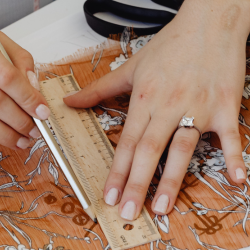3D animation has revolutionized visual storytelling, offering immersive depth and realism that captivate audiences across film, television, games, and advertising. From the nostalgia-rich charm of beloved TV characters to cinematic gaming worlds and eye-catching commercial campaigns, 3D animation examples showcase how this medium brings creations to life in unforgettable ways. Whether you’re a professional or a student enrolled in a 3D animation course, understanding these examples can sharpen your creative and technical skills.
In this article, you’ll explore standout examples of 3D animation movies and cross-media projects—from iconic TV series and blockbuster games to experiential art installations. You’ll learn how each example uses storytelling, technical craftsmanship, and visual flair to inspire your next 3D animation project. We’ll also guide you in choosing the right type of 3D animation based on your creative goals.
Table Of Content
Examples of 3D Animation
To fully grasp the creative potential of 3D animation, it helps to study real-world examples that have captivated audiences. Below are some of the most notable 3D animation examples across diverse industries, each showcasing a unique approach to storytelling, visual style, and technique.
Television: Rugrats
The original Rugrats was a beloved 2D animated series, but the 2021 reboot brought a bold twist by introducing it in full 3D. This transition gave new life to the characters and environments, allowing for more expressive animations and immersive backgrounds. It’s a prime example of how classic TV shows can be reimagined using modern 3D computer animation examples without losing their original charm.
The Rugrats reboot maintained the storytelling spirit while using 3D tools to enhance visual engagement. The textures, lighting, and depth added a dynamic feel, which appealed to both nostalgic audiences and a new generation. It’s a great reference for those studying TV-focused 3D animation portfolio examples, showcasing how traditional animation can evolve.
Video Games: The Last Of Us
Naughty Dog’s The Last of Us is not just a game—it’s a cinematic experience. This masterpiece of storytelling and visual design features lifelike characters, realistic environments, and smooth motion capture, making it one of the most acclaimed 3D animation examples in the gaming world.
The game’s stunning animation captures emotions, subtle gestures, and dramatic scenes with remarkable detail. It demonstrates how powerful 3D animation can be when it’s combined with storytelling and interactive design. If you’re building a 3D animation portfolio, looking at projects like this can offer insights into blending realism with gameplay to keep audiences immersed.
Advertisements: Mucinex
When it comes to brand storytelling through animation, the Mucinex commercials stand out. These ads feature Mr. Mucus, a fully animated 3D character interacting with live-action settings. The exaggerated expressions and movements of Mr. Mucus make medical advertising more relatable and even entertaining.
This is one of the clever 3D animation examples that shows how 3D can be used for humor and product recall. The animation is crisp, character design is memorable, and the transitions are seamless—making it an excellent reference for those interested in 3D computer animation examples for business marketing or branded content.
Immersive Art: Cannes Lions
The Cannes Lions International Festival of Creativity often features groundbreaking visual art installations, and in recent years, 3D animation examples have played a huge role. Brands and studios use immersive 3D visuals to create emotionally powerful, sometimes interactive, storytelling pieces that leave a lasting impact.
One example is the use of projection mapping and 3D elements in campaigns that blur the line between real-world environments and digital storytelling. These pieces demonstrate how examples of 3D animation movies and interactive displays can work together to produce awe-inspiring results—ideal for anyone exploring experimental or experiential design.
Which Type of 3D Animation is Right for Your Project?
Before diving into a project, it’s essential to know which 3D animation style best suits your vision. The ideal choice depends on your audience, message, and medium. Here are a few types to consider:For nostalgia or brand familiarity, television-style, like Rugrats, offers clean, friendly visuals.
- For emotional storytelling and immersion, cinematic game-style, like The Last Of Us, provides depth, realistic character work, and detailed worlds.
- For marketing campaigns, character-driven ads, such as Mucinex, intrigue and engage through visual humor and motion.
- For experiential or art-driven projects, immersive 3D, seen in Cannes Lions showcases, harnesses interaction, projection, and installation formats.
When selecting your approach, align technical complexity with your budget and audience intent—this clarity in vision can shape successful 3d animation examples for your own project.
Conclusion
3D animation offers boundless creative potential, from beloved reconstructions to immersive, interactive experiences. By reviewing compelling 3D computer animation examples, you can discover what resonates with your audience—whether that’s playful nostalgia, cinematic depth, compelling ads, or next-gen art. Use these inspirations to define your animation style and elevate the visual storytelling of your next project.
If you’re ready to bring your animation vision to life, the right training can make all the difference. Explore AAFT Online’s Diploma in 3D Animation and Visual Effects course to learn the tools, techniques, and industry insights that professionals use to create standout animation.
FAQs
Q1. What are some popular examples of 3D animation?
From TV (Rugrats), games (The Last Of Us), ads (Mucinex monsters), to immersive art (Cannes Lions), top 3d animation examples span diverse formats and themes.
Q2. What industries commonly use 3D animation?
3D animation is widely used in entertainment (film, TV, games), marketing, advertising, education, architecture, and immersive experiences like AR/VR.
Q3. How is 3D animation different from 2D animation?
3D creates depth, realistic lighting, and lifelike movement, whereas 2D relies on flat, frame-by-frame artistry. The added dimension enables stronger immersion and dynamic visual storytelling.
Q4. Can 3D animation be used for business marketing?
Absolutely—brands use it for vibrant ads, product demos, explainer videos, and interactive installations, turning static messages into memorable 3d computer animation examples.
Q5.Where can I see professional 3D animation samples?
Platforms like YouTube, Vimeo, online portfolios, and festivals such as Cannes Lions are excellent places to explore high-quality 3d animation examples and portfolio showcases.
























